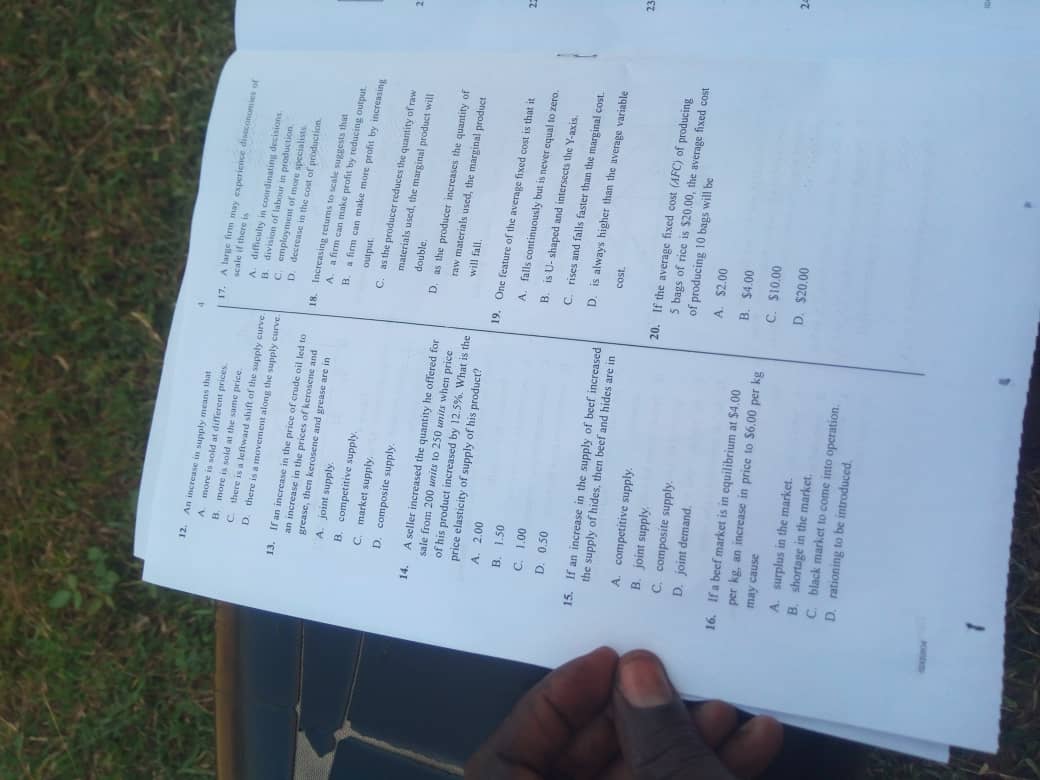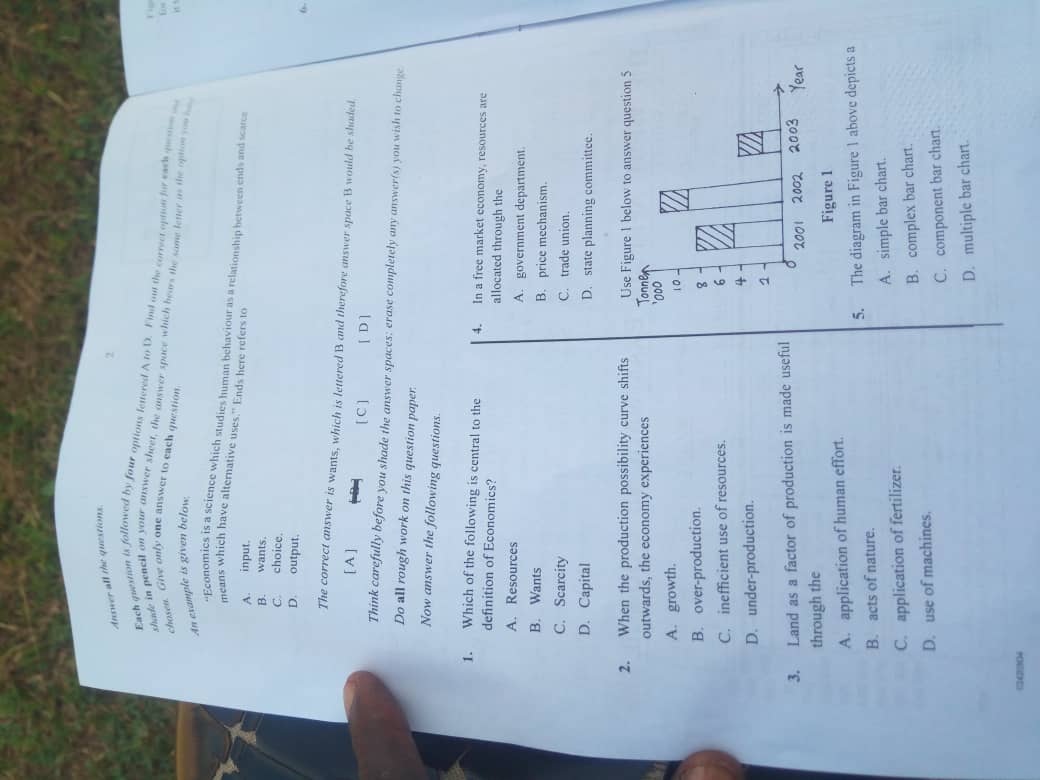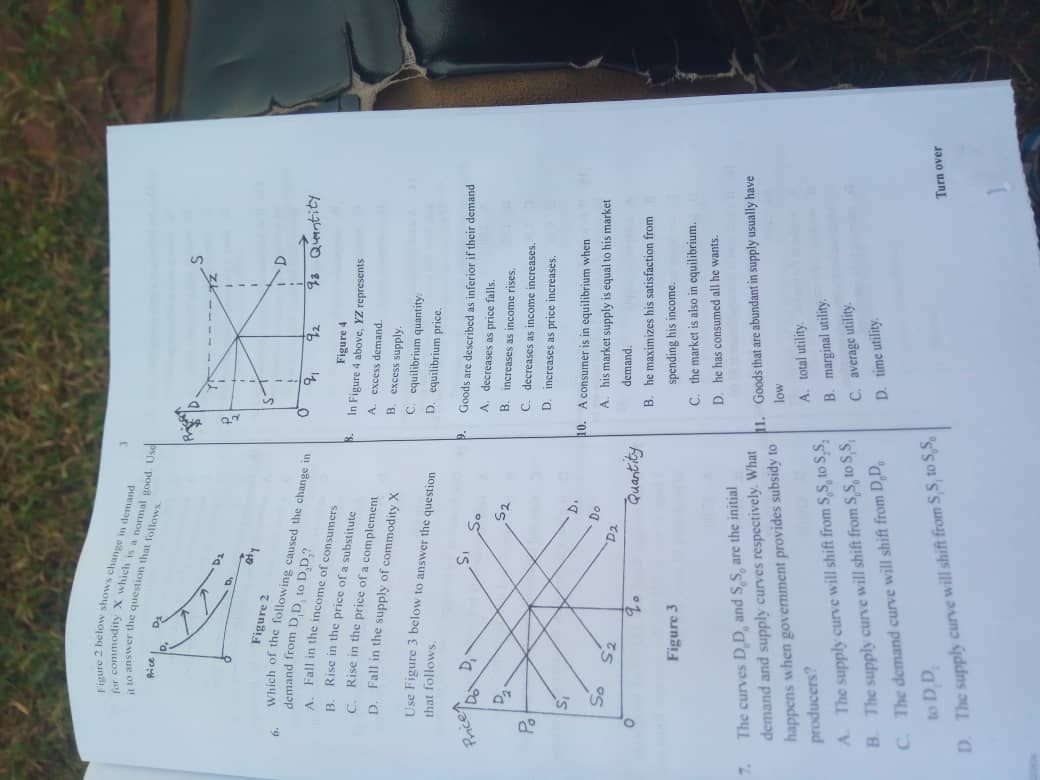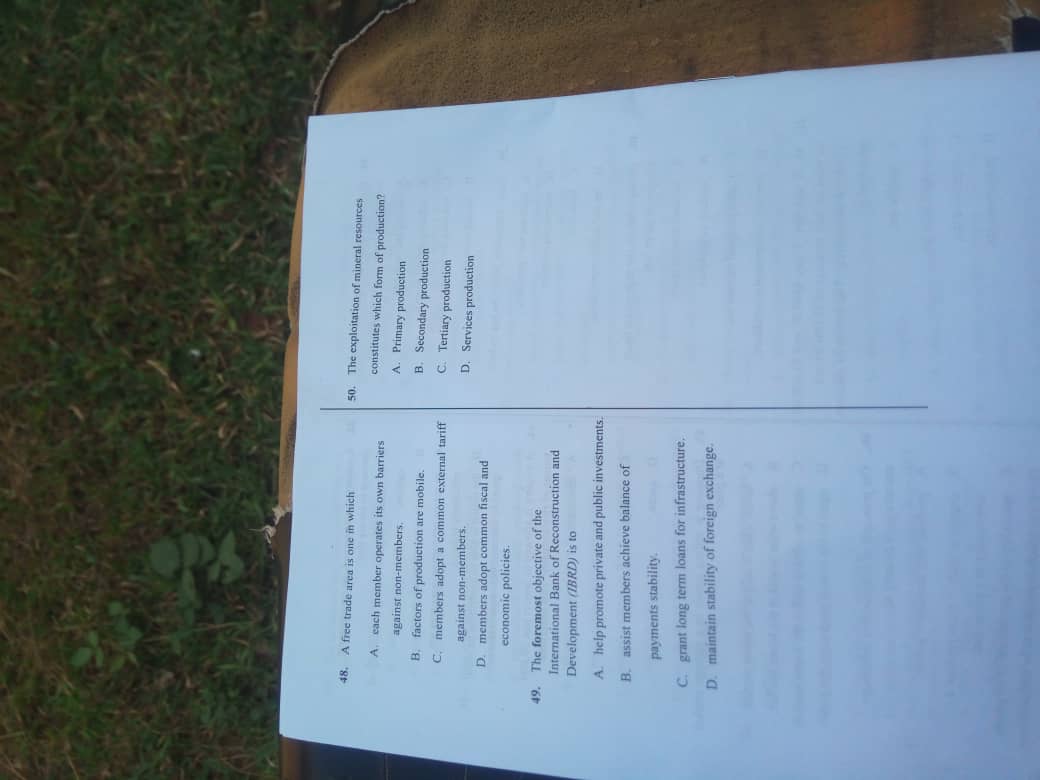WWW.SOLUTIONFANS.COM - MASTER OF ALL EXAM RUNS
WAEC-ECONOMIC-ANSWERS
Keep Subscribing With Us To
Enjoy Our Service And Get Your Legit.
Solution Before Exam Time.
=====================================
WAEC-ECONOMIC-ANSWERS
Economic-Obj
1CBABCBCBCB
11BCDAAAABAC
21DBDAACDABA
31BABDCCBADB
41DDDABDBBCA
Www.Solutionfans.Com
Love You All.
=====================================
(1)

(1a)
X -80=-9.8
X= 80-9.8
X=70.2
80-70=Y
Y=10
Z=50/2
Z=25
(1b)
(i) Increasing returns ( level 0 to 2)
(ii) Decreasing reruns ( level 3 to level 6)
(iii) Negative returns (level 6)
(1c)
The law of diminishing returns states that F increasing quantities of one factor are combined with fixed supply of other’s in production,a point is reached from which each extra variable factor added yields loss and less addition to the total output
(1d)
(i)
Diagram
(ii)
– The total product at any given level of labour input is equal to the sum of all the marginal product up to that level
– The MP is zero at the point where TP is maximum
=====================================
(4ai)
Capital expenditure is primarily expenditure on the creation of fixed assets and on the acquisition of land, buildings and intangible assets. While Recurrent expenditure refers mainly to expenditure on
operations, wages and salaries, purchases of goods and
services, and current grants and subsidies.
(4aii)
Monetary policy refers to government activities that are directed toward influencing the quantity of money and credit in an economy. While Fiscal policy involves the use of government spending and revenue raising (taxation) to impact a number of aspects of the economy
(4b)
(i)General Administrative Purposes The administrative machinery of a country may collapse if there is
no money to maintain it; tax therefore forms one of the sources of
such money.
(ii)Defence Purposes
Taxation contributes part of the money used in maintaining a country’s armed forces.
(iii)The Maintenance of Law and Order For internal peace and stability of a country to be guaranteed, laws
must be made and executed, which require money.
(iv)Redistribution of Incomes To achieve this, income tax is made to be progressive in nature.
=====================================
(8a)
(i)Commercial farming is mainly practised in developed countries whereas subsistence farming in less developed or developing countries.
(ii) Commercial farming is cultivated for profits whereas subsistence farming is for the consumption of the farmer and his/her family.
(iii) Commercial farms are very large while that of the subsistence farming are quite small.
(iv) Commercial farming is not dependent much on man power or animal power whereas subsistence farming is dependent.
(v) In commercial farming, there are proper irrigation facilities whereas subsistence farming is generally dependent upon the monsoon.
(8b)
(i) It is usually grown in a piece of land where the land is quite small in the area.
(ii) This type of farming is usually done for the food crop where the farming is done just to satisfy the requirement of the farmers family and not for the purpose of selling it into the market.
(iii) The machineries which are used for the farming process usually primitive.
(iv) Primitive form of irrigation or little irrigation is done for this type of farming.
(8c)
-Positive effects-
(i)It serves as source of revenue for the government
(ii)It creates job opportunities for people in the area.
-Negative effects-
(i)It causes loss of valuable lands
(ii)It causes environmental pollution and pose health hazards
=====================================
(3a)
Consumer goods are products bought for consumption by the average consumer. Alternatively called final goods, consumer goods are the end result of production and manufacturing and are what a consumer will see stocked on the store shelf.
(3bi)
fixed capital is conventionally defined as the stock of tangible, durable fixed assets owned or used by resident enterprises for more than one year.
-Example-
(i)plant
(ii)machinery
(iii)vehicles and equipment
(3bii)
Social capital it basically comprises the value of social relationships and networks that complement the economic capital for economic growth of an organization
-Examples-
(i)when someone opens a door for someone
(ii)returns a lost item to a stranger
(iii)gives someone directions or loans
(3biii)
Circulating capital is money being used for core operations of a company.
-Example-
(i)operating expenses
(ii)inventory in process
(iii)Raw material
(3c)
(i)The level of the real interest rate and the level of per capita GDP.
(ii)The proportion of labor remuneration in national income and Fiscal policy.
(iii)The distribution of income and high effect of taxation.
=====================================
(6a)
Money is an economic unit that functions as a generally recognized medium of exchange for transactional purposes in an economy. … Money can be: market-determined, officially issued legal tender or fiat moneys, money substitutes and fiduciary media, and electronic cryptocurrencies.
(6bi)
value of money, then, is the quantity of goods in general that will be exchanged for one unit of money. The value of money is its purchasing power, i.e., the quantity of goods and services it can purchase.
(6bii)
demand for money is the desired holding of financial assets in the form of money. In othet words that is, cash or bank deposits rather than investments.
(6c)
(i)The price of the good or service.
(ii)The income of buyers.
(iii)The prices of related goods or services—either complementary and purchased along with a particular item, or substitutes and bought instead of a product.
(iv)The tastes or preferences of consumers will drive demand.
=====================================
Completed
Some Of The Questions




Please Use The Comment Button To Tell Us How U Feel Toward Our Service
also don't forget to leave a Reply, we would very MUCH appreciate Your Comments On This Post Below. Thanks!

